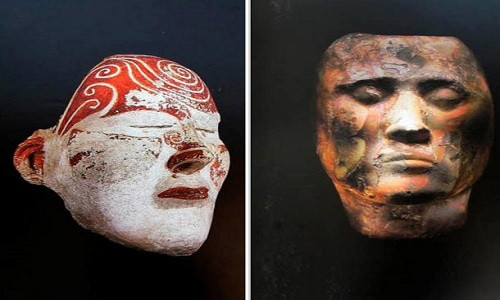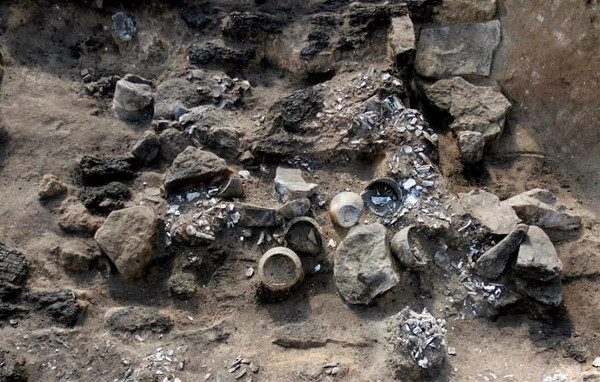The mask of the dead reveals the portrait of the ancient Siberian people
The dummy plaster mask on the face containing the remains is part of the burial rite of the Siberian people who lived more than 1,500 years ago.
The plaster mask revealed the ancient Tashtyk face in Siberia
The crypt contains 30 remains in Kemerovo, Russia, helping archaeologists take a new look at the appearance of the ancient Siberian, famous for its dead masks , the Ancient Origins recently reported.
The method of burial used in the crypt shows the ethnic remains Tashtyk dominated a large part of Siberia from the 2nd century BC to the 6th century.

Masks made from plaster of ancient Tashtyk people.(Photo: Boris Donilin).
Earlier, the death of the tribe Tashtyk was simply buried in the ground. But at the Shestakovo-3 tomb , the bodies were cremated almost completely, leaving only large bones. The Tashtyk person placed the bone in the dummy made of leather or cloth. Then, they put on a mannequin a plaster mask that showed the face of the deceased.
Dr. Pavel German from the Institute of Human Ecology in Kemerovo, who directed excavations, said in addition to the dead mask, they also found ceramic vases, bronze locks and harnesses in the crypt. In other tombs, the researchers discovered many miniature copies of swords, arrows and name tubes.
"The gypsum masks are best preserved in the dry environment of sandy soil. At Kemerovo, the soil is wetter and has roots everywhere, affecting storage. We found a lot of debris and hope to restore the masks " , Ancient Origins said on October 20.

Artifacts found in the crypt.(Photo: Pavel German).
According to German, his group collected 20 death masks."This tomb is huge and we conducted excavations during the two seasons. The area inside the crypt is 40m 2 in size . We roughly estimate there are 30 people buried here. Therefore, the number of masks maybe more, " German said.
The remains of children were buried near the wall of the catacombs and there was no mask. The person Tashtyk did not cremate children under 5 years old and did not bury the body in the tomb.
German explained the findings indicating Tashtyk's burial rite . First, they dug a hole in the ground, built surrounding stone walls, made paving boards and covered holes with trees. In a period of more than a year, the tomb began to fill up with dummies containing dead human remains.
- Detect a tremor from an ancient 3000-year-old mask in Argentina
- Reconstruction of the ancient
- Detecting ice age people in Siberia through milk teeth
- Dead Sea ancient texts reveal 'miracles' that 2,000 years of material did not disintegrate
- Discover the oldest ritual mask in Japan
- Mysterious beauty in the ancient tomb of the king is full of gold
- Successfully fabricated the 'Ironman' mask
- Ancient letter of 2000 years of portrait painting of Jesus
- Gorgeous tattoos on Siberian princess body
- Detect tremors about Pacal the Great Mayan
- Masks with fans, exhaust valves for hot days
- 'The island dies' - Where life is calculated day by day
 Discovered an ancient centipede fossil 99 million years old
Discovered an ancient centipede fossil 99 million years old Discovered bat-like dinosaurs in China
Discovered bat-like dinosaurs in China Discovered a 200-year-old bronze cannon of the coast
Discovered a 200-year-old bronze cannon of the coast Discover 305 million-year-old spider fossils
Discover 305 million-year-old spider fossils